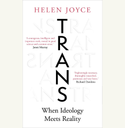If I were a feminist, I’d be Camille Paglia.
For over two decades now, Paglia, a Professor of Humanities at the University of the Arts in Philadelphia, has proudly set herself apart from mainstream American feminism through her books (Glittering Images; Break, Blow, Burn; Vamps & Tramps; Sexual Personae) and many articles. A collection of these articles has now appeared under the title Free Women, Free Men: Sex, Gender, Feminism. There, you can find her refreshingly politically incorrect critique of the unquestioned assumptions and one-sided diagnoses that dominate feminist discourse.
Central to Paglia’s critique of that discourse is its “Rousseauian” insistence that all differences between the sexes are nothing but “constructs” “inscribed” on the sexes by adverse (male) social pressures (that being the source of any and all trouble between the sexes). In her view, this is willful blindness to all the evidence, a blindness apparent, for example, in the work of Kate Millett, the matriarch of “second-wave feminism,” who wrote: “Patriarchy is so powerful, that it has a successful habit of passing itself off as nature.” Paglia, by contrast, holds that certain key differences—not the restrictive stereotypes of the ‘50s she so detested as a young girl—are, in fact, rooted in nature. As she observes, across cultures “there is something fundamentally constant in gender that is grounded in concrete facts.”
Such “constants,” not being the product of a nefarious patriarchy, incline Paglia to a much more positive assessment of maternity that places women more on the side of nature, representing it, so to speak. In her view, “The question of motherhood is central.” Flipping the usual equality talk on its head, she writes: “There is one place where men can never equal women and where female power is at its height—the realm of procreation.” Feminist ideology, in Paglia’s view, has never dealt honestly with this “mother power.” “Its portrayal of history as male oppression and female victimage is a gross distortion of the facts.” She disdains the “peevish, grudging rancor against men.” As for the traditional division of labor, she harkens back to that time well before the 1950s—that constant foil!—when her own two grandmothers “had an awesome majesty and power and a greater stature than that of any feminist I have yet met …[yet] rarely left the kitchen, the warm shrine of the home, from dawn to midnight.” As for motherhood, she, a mother, rails against the absence of any positive account of children who are at most “a management problem to be farmed out to working-class nannies” or daycare centers when they haven’t been “dealt with” ahead of time. Paglia, who is by no means a “pro-lifer,” exposes the callousness of the feminist sine qua non that does not reckon with the violence of abortion.
Paglia’s insistence on looking at the evidence of things and “getting back to nature” shows up most prominently in her dealings with sexual desire. Being a lapsed Catholic of Mediterranean extraction, she is allergic to the “pinched, cramped, body-denying Protestant culture” that runs through so much of American feminism. “Leaving sex to the feminists is like letting your dog vacation at the taxidermist’s,” she says. Unlike her “naïve and prudish” feminist sisters—such as Catharine MacKinnon and Andrea Dworkin—she is “pro-sex.” (Full disclosure: that includes being pro-pornography.) But she is also a “realist.” She takes the “Hobbesian” view: namely, that sex is a “red flame” caught up with the “deep, dark earth rhythms” of nature: vitality, allure, and glamour but also aggression, power, and conflict. In the case of men, this aggression takes the form of hunt, pursuit and capture, and, of course, rape. In the case of women, it takes another form, chiefly in the form of possessive motherhood. She’s an equal opportunist.
By denying all this and throwing social cautions to the wind, telling women “they can do anything, go anywhere, say anything, wear anything,” it is feminism, declares Paglia, that has made them vulnerable, not patriarchy. “A girl who lets herself get dead drunk at a fraternity party is a fool. A girl who goes upstairs alone with a brother at a fraternity party is an idiot. Feminists call this ‘blaming the victim.’ I call it common sense.” It is her “realism” that fires Paglia’s vitriol against the “date rape” (her scare quotes) and sexual harassment campaigns and regimes, going all the way back to the Anita Hill affair and including the most recent anti-male grievance fest, the #MeToo movement (too recent to be included in the book, but commented on by Paglia here).
Paglia’s “realism” is refreshing, especially when compared to the only narrative currently permitted in public discourse: men are aggressors, women are victims, and patriarchy is to blame. That said, for all her seriousness about human nature, Paglia is as much in favor of overcoming it as she is for rooting sexual difference in it. Indeed, much of Paglia’s pro-man talk is driven by the fact that men are the ones chiefly responsible for “transcending” nature through art, science, and politics, by virtue of their general capacity to project (a talent expressed in their very physiology). She famously wrote in her Sexual Personae: “If civilization had been left in female hands, we would still be living in grass huts.” This celebration of transcendence would not be alarming, especially for those who have a more classical understanding of human nature (as already set up for culture-making). But, having a “pagan” view of nature (her qualifier), she cannot but pit transcendence against nature. This is clear enough when she states: “we have the right to thwart nature’s procreative compulsions, through sodomy or abortion. Male homosexuality may be the most valorous of attempts to evade the femme fatale and to defeat nature.” And “my absolute right to my body takes precedence over the brute claims of mother nature.”
Still, Paglia’s “realism” makes her more aware of the limits of such a project than most feminists. Whether it concerns promiscuity, delayed pregnancy for young women, the disregard for the traditional division of labor, or homosexuality and abortion, Paglia’s judgment is clear: “there are certain fundamental principles of human life that return again and again … I have serious doubts about whether androgyny can usefully be extended as a master plan for the human race.” Indeed, Free Women, Free Men is littered with apocalyptic warnings about cultural collapse for an age committed to “extravaganzas of gender experimentation.” “There are many parallels between our time and that of the Roman empire. Whenever you get cosmopolitan cultures that are very tolerant and permissive . . . it seems to be the case that such cultures are ripe for collapse.”
The book is a mixed bag, to be sure. Still, it offers a much-needed challenge to the assumptions of mainstream feminism. Perhaps more importantly, it offers some caution for traditionally-minded women tempted to jump on the latest feminist band-wagon in hopes of selling their (good) moral package. We all agree that rape (when it is rape) is bad, as is demanding sexual favors in exchange for movie roles and promotions. But the motives and “solutions” of those driving the band wagon aren’t ours. They want androgyny: abstract, dis-embodied, interchangeable individuals, with no natural relation to each other, no common path, no common project. Is that what we want? Do we really want to promote a world where the natural electricity between men and women has been turned off, either by threat of legal action (for even a mere compliment) or—to pick up on one of Jordan Peterson’s latest challenges—the enforcement of a stricter dress code, of, say, Mao suits for everyone? What will we achieve if, in our “shock” over the latest revelations of misbehavior, we help to bury the last remnants of a pre-androgynous world? A world in which men and women studying and working together were still recognized to be just that—a world, therefore, of eros, allure, and flirtatiousness, along with the modesty and gentlemanliness that guided these, in courtship, toward a life-long and fruitful marriage.
By recognizing certain (natural) evidences and questioning dominant foils, caricatures, and one-sided finger-pointing, Paglia clears a path for a bigger project, one that would have older and deeper resources than her own Hobbesian ones, to be sure. Such a project would bring men and women together, and on more positive ground.
Margaret Harper McCarthy is an Assistant Professor of Theology at the John Paul II Institute and the US editor for Humanum. She is married and a mother of three.
Keep reading! Click here to read our next article, Bringing Up Boys.



